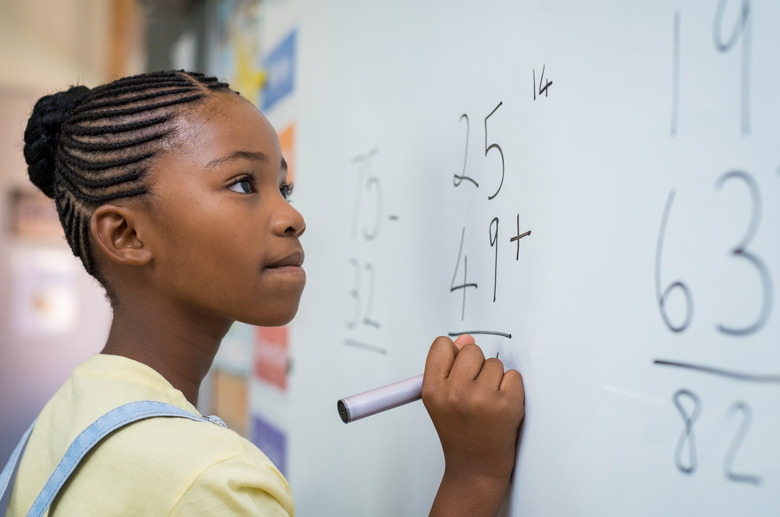How To Learn Math From Scratch
Every day, there are students struggling to get a high school or college diploma because they lack basic math skills. In some cases, it is possible to make it through a placement test only to discover that the first required math class seems impossible. Holes in the education system regularly leave people without the skills needed to do basic calculations or learn higher levels of math. Math difficulties often build on themselves and math phobias form. But, learning math from scratch is possible and shouldn't be scary.
Step 1
If the situation is such that a tutor is affordable, hire one. Learning one-on-one in an interactive environment will lead to the most success in the shortest period of time. A tutor can also suggest good resources.
Step 2
Look for math text books. These can often be found for under a $1 in thrift stores. To start with, find books that are around the fourth grade level. These should focus on basic math skills such as working with fractions, long division, percentages and word problems.There are also math texts available that focus specifically on self-taught math or that can be ordered with a self-teach guide.
Step 3
Focus on word problems. These are the problems that will build math skills the most. They will be useful in real-life situations and help tie concepts to previous knowledge. If word problems are difficult, work on those from a level or two lower than what you can do numerically.
Step 4
When a math skill seems to come easily, do some more. Most people who struggle with math also struggle with study skills. It is especially important to do many problems in each concept or section if there is no teacher there to enforce it. A type of problem should be boring before it is time to move on.
Step 5
Practice drawing a visual picture whenever applicable whether it be a word problem or regular problem. This ability to visualize will be necessary when starting to graph in pre-algebra and algebra work.
Step 6
Learn the right terms and talk out loud when doing problems. Don't say, for instance, "X two" for "X squared." This will help keep things straight and you will develop an ability to coach yourself through problems.
Step 7
Find worksheets online so that you can test your math skills. Many of these worksheets are free and provide the answers so that you can check your work. Furthermore, they are written from different points of view so that you will learn to recognize the concept in different contexts. This is important to prepare for any placement tests.
Step 8
Once comfortable with basic arithmetic and word problems, move up to pre-algebra and then algebra, keeping the same suggestions in mind.
Things Needed
- Math text books (look in thrift shops)
- Tutor (if possible financially)
- Online materials
TL;DR (Too Long; Didn't Read)
If you have difficulty with word problems, try working on ones from a level or two below the numerical problems you can do.
Buy several different text books for each level. Books vary greatly and you will eventually have preferences.
References
Cite This Article
MLA
White, Kathryn. "How To Learn Math From Scratch" sciencing.com, https://www.sciencing.com/how-to-learn-math-from-scratch-12741780/. 11 July 2009.
APA
White, Kathryn. (2009, July 11). How To Learn Math From Scratch. sciencing.com. Retrieved from https://www.sciencing.com/how-to-learn-math-from-scratch-12741780/
Chicago
White, Kathryn. How To Learn Math From Scratch last modified August 30, 2022. https://www.sciencing.com/how-to-learn-math-from-scratch-12741780/
